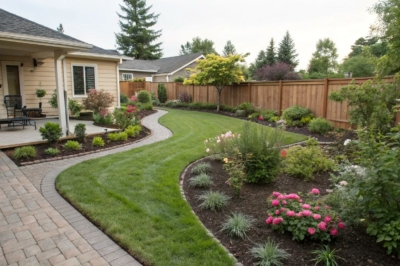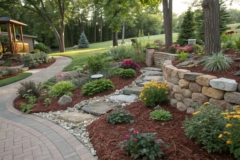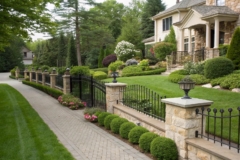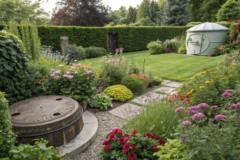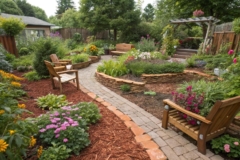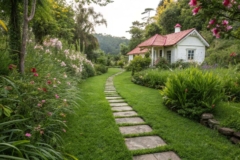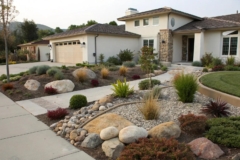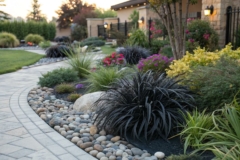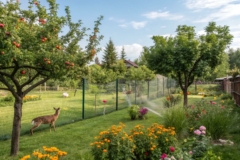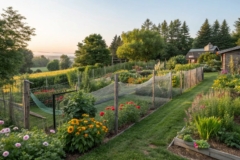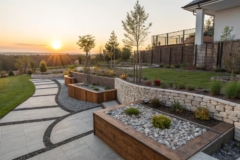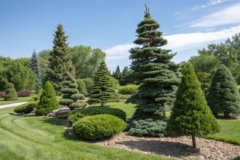1. Metal Edging

For a sleek and modern look, install metal edging around your garden. It’s unobtrusive yet incredibly effective at stopping grass in its tracks.
You might like:
- Steel Landscape Edging Strips: Prevent grass encroachment effectively and enhance your garden’s look with steel edging strips.
- Metal Garden Border Edging: Create clean lines in your garden with durable metal border edging, perfect for defining spaces.
- Aluminum Edging for Gardens: Lightweight yet sturdy, use aluminum edging to separate lawn and garden for a modern appeal.
2. Raised Garden Beds
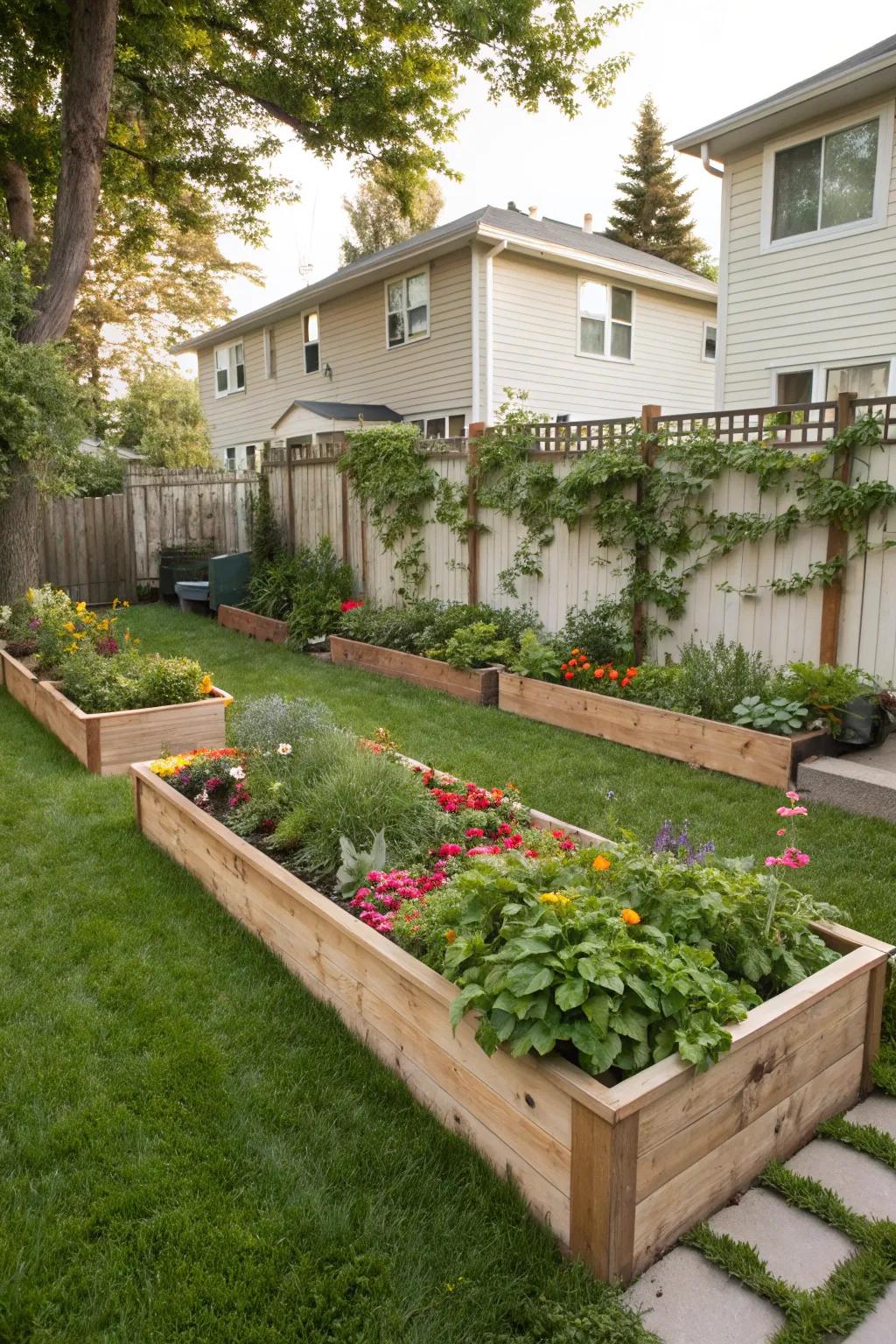
Raised garden beds are my go-to solution for keeping grass at bay. By elevating your plants, you create a natural barrier that grass finds tough to breach.
A few suggestions:
- Wooden Raised Garden Bed Kit: Assemble a wooden raised bed easily to keep grass out and organize your garden neatly.
- Galvanized Steel Raised Garden Bed: Invest in a galvanized steel bed for durability and to prevent grass encroachment effortlessly.
- Gardening Fabric Liner for Raised Beds: Add a fabric liner to your raised bed to suppress weeds and maintain soil health.
3. Log Edging
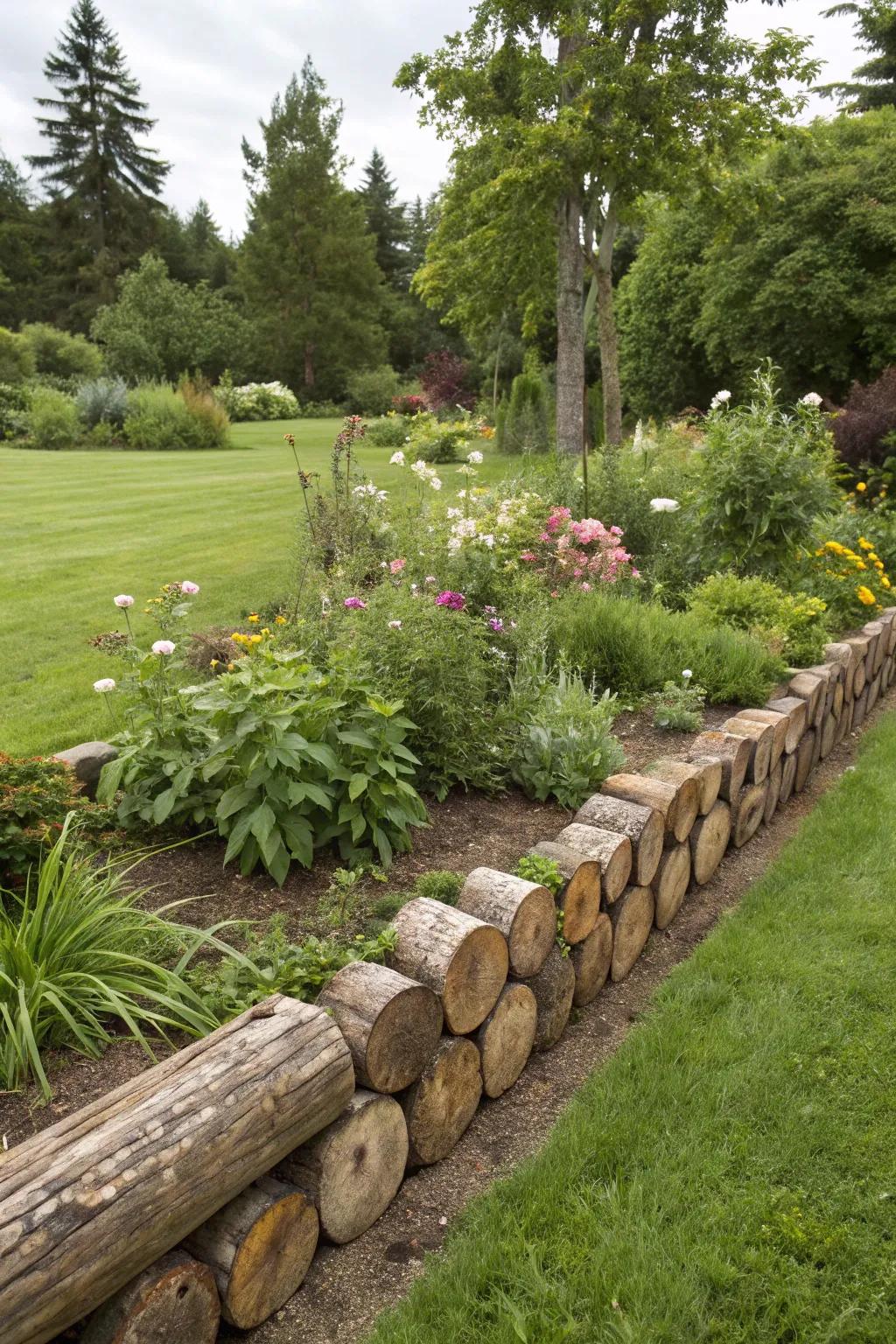
Use logs or branches as a natural barrier that blends beautifully into woodland gardens. This is my favorite for creating a cozy, natural vibe.
Give these a look:
- Garden Landscape Logs: Create a natural garden border with these rustic logs, adding warmth and charm instantly.
- Wooden Border Edging Stakes: Secure your garden borders effectively with sturdy wooden stakes for a cohesive natural look.
- Natural Log Edging Roll: Install this flexible log edging easily to enhance your garden’s rustic appearance beautifully.
4. Wooden Borders
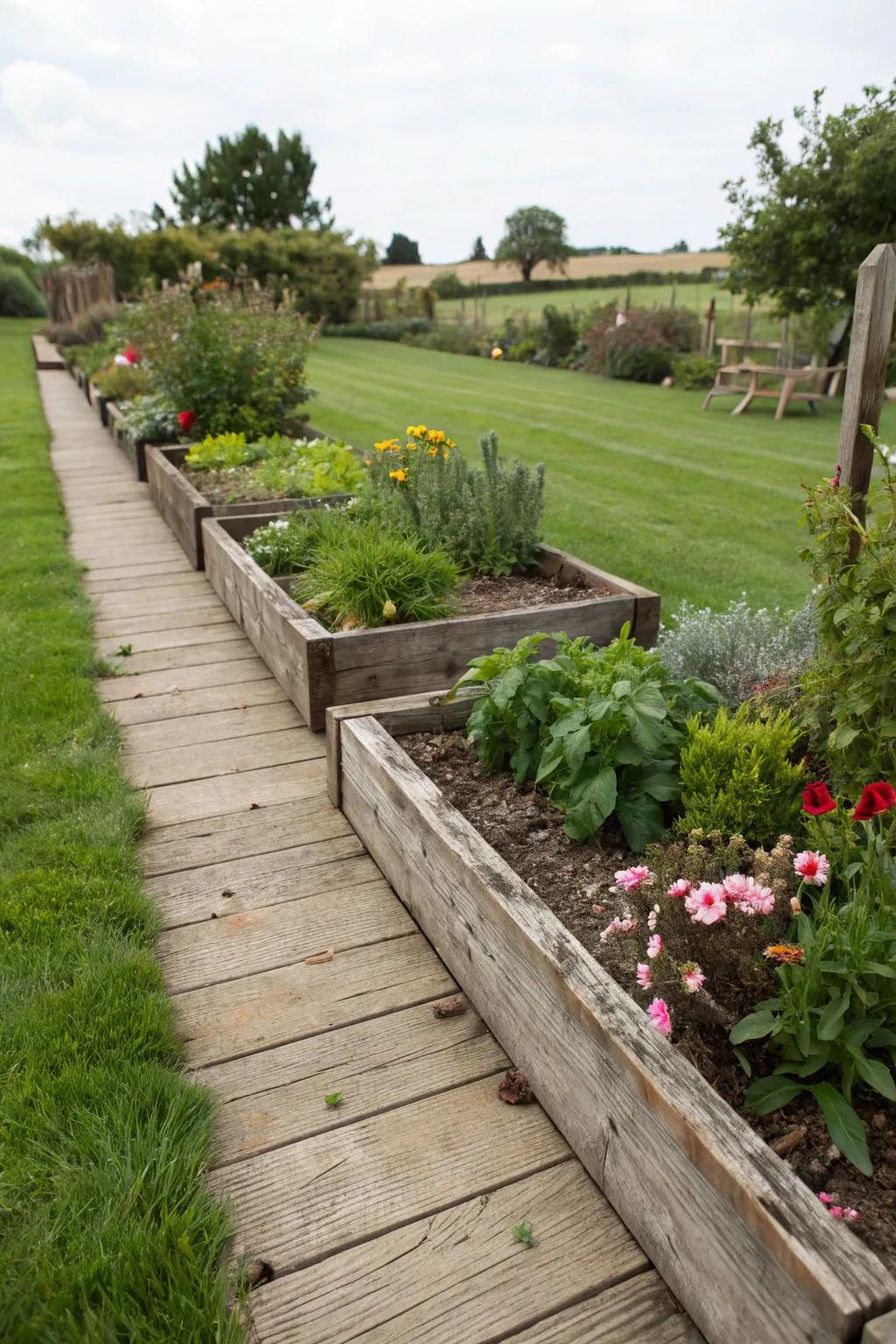
Use untreated wooden planks to frame garden beds, creating a rustic and effective barrier. Just ensure they’re set deep enough to deter those sneaky grass roots.
Some ideas to consider:
- Untreated Wooden Planks: Frame your garden beds with rustic wooden planks for a natural, effective barrier against grass.
- Garden Bed Corner Brackets: Secure your wooden planks with sturdy brackets to create a lasting garden bed frame.
- Ground Stakes for Wood: Use robust ground stakes to firmly anchor wooden planks and keep grass out of your garden.
5. Recycled Materials
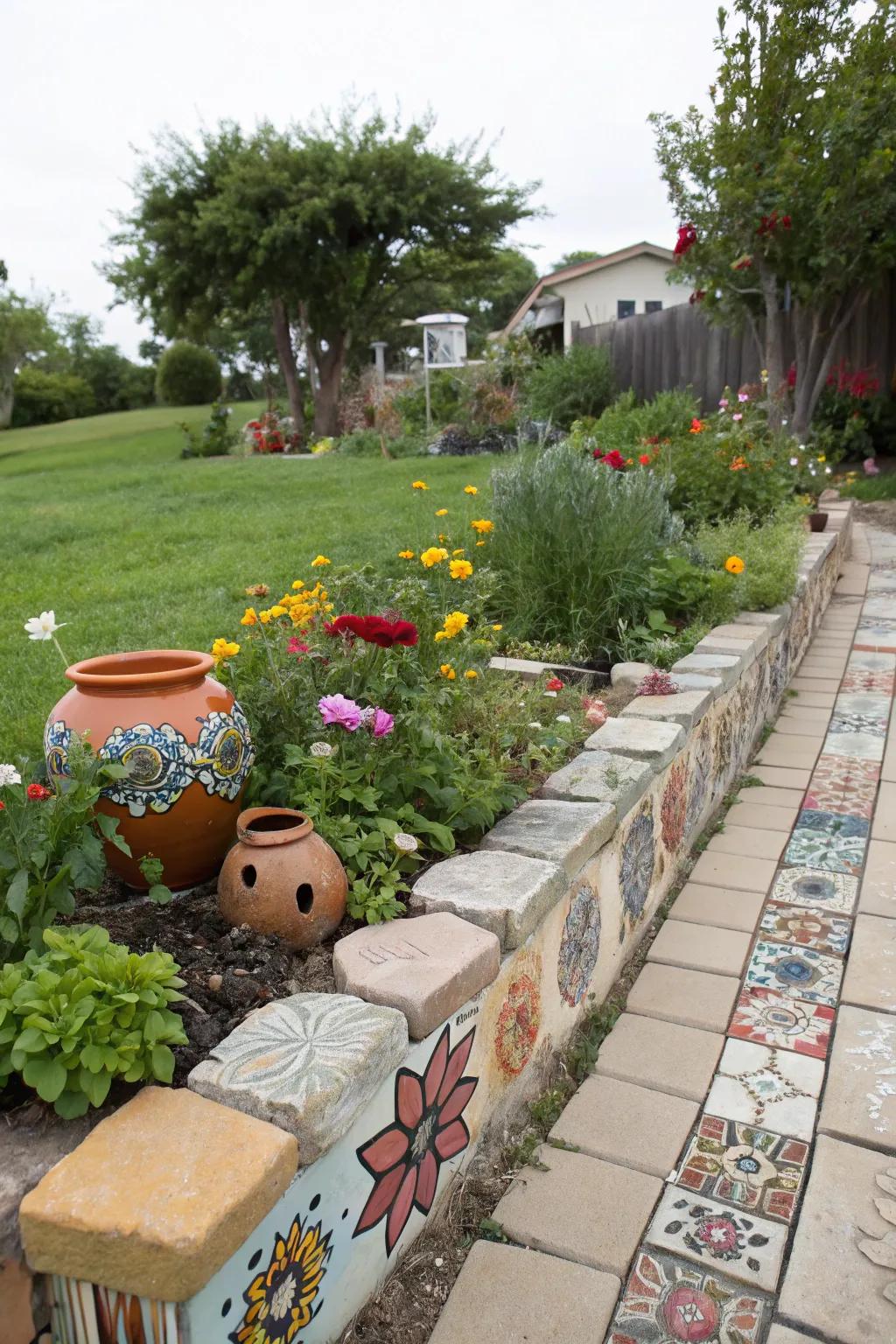
Get creative by using recycled materials like old tiles or broken pottery to create a unique garden edge. It’s sustainable and adds a personalized touch to your garden.
Consider these options:
- Decorative Garden Edging Tiles: Enhance your garden’s edges with decorative garden tiles for a beautiful, sustainable finish.
- Broken Pottery Mosaic Kit: Create stunning, personalized garden edges with a broken pottery mosaic kit. Get creative!
- Recycled Ceramic Planters: Add charm to your garden with recycled ceramic planters; a touch of eco-friendly elegance.
6. Living Walls
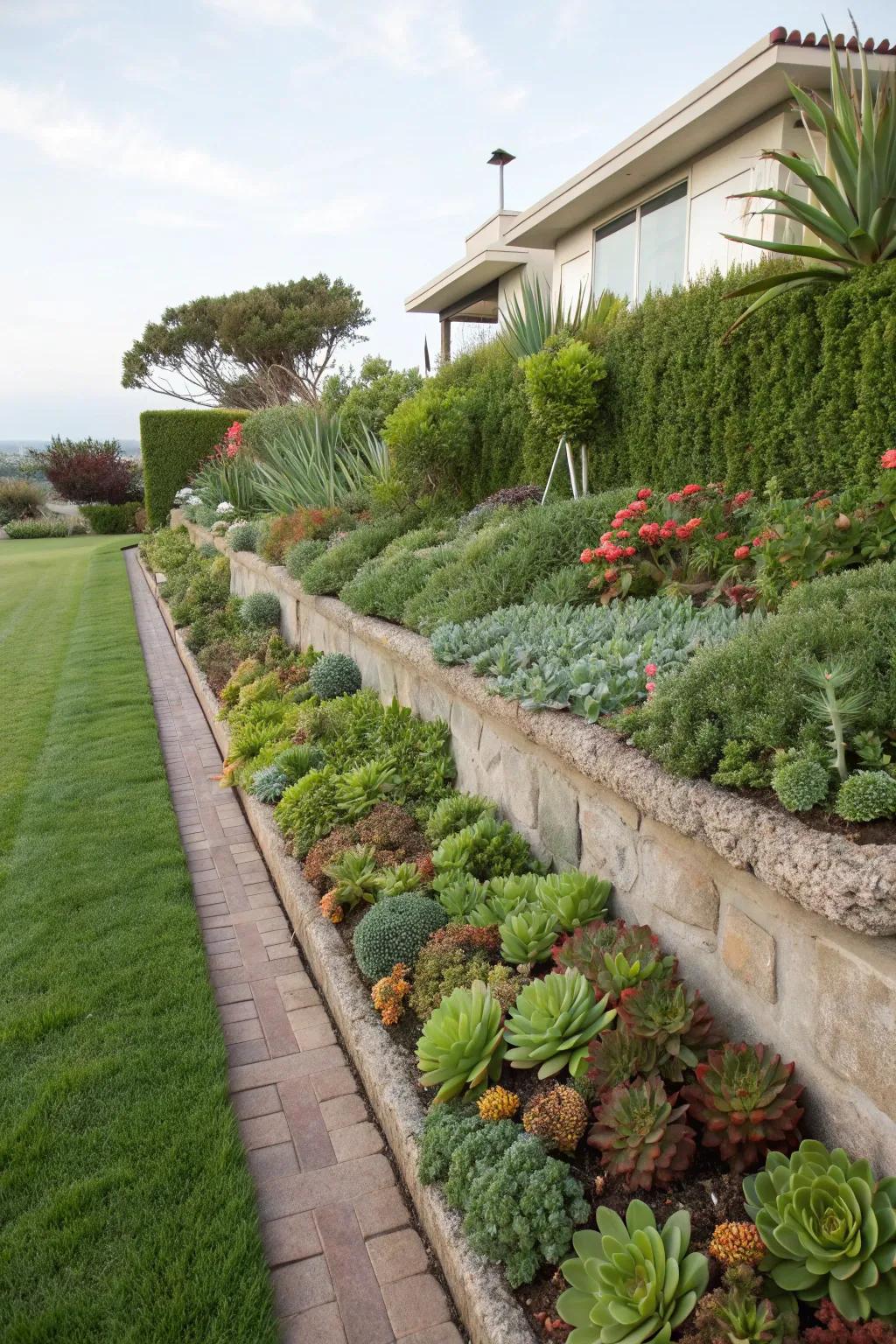
Construct a low living wall with succulents or mosses as a natural and artistic barrier. This option is a showstopper in any garden setting.
Might be a good match:
- Vertical Wall Planter Kit: Create a stunning living wall with ease and enhance your garden’s aesthetic appeal today.
- Succulent Soil Mix: Ensure your succulents thrive with premium soil designed for optimal drainage and nourishment.
- Moss Wall Art Frame: Craft beautiful moss displays effortlessly with these easy-to-use frames for natural decor.
7. Brick Edging
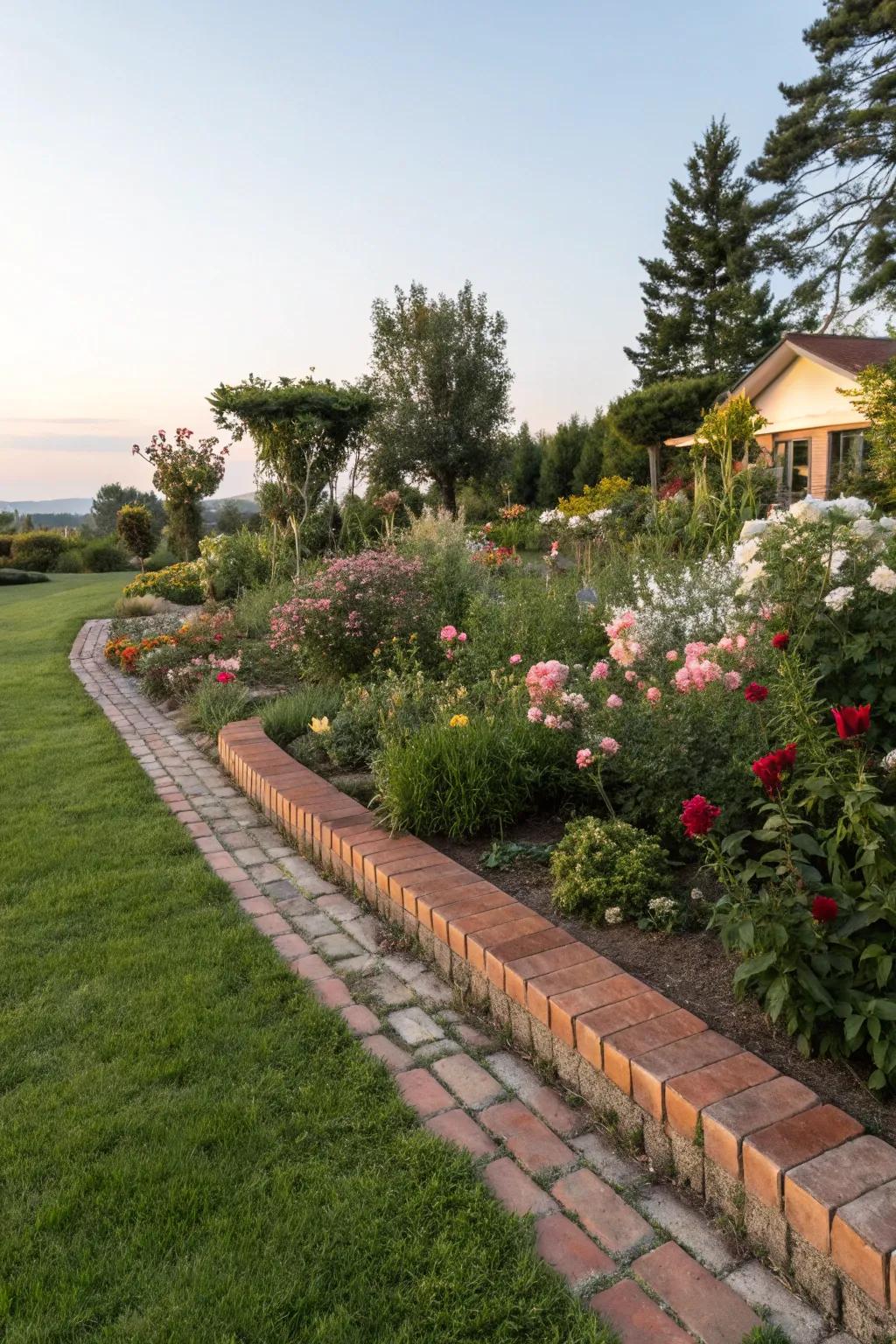
Laying bricks flush with the ground creates a sturdy edge and prevents grass spread. It’s a classic look that adds structure to any garden layout.
Check these products out:
- Garden Landscape Edging Bricks: Enhance garden structure with landscape bricks for a classic, grass-free border design.
- Rubber Mallet: Utilize a rubber mallet for safely securing bricks in garden layouts without damage.
- Level Tool for Landscaping: Ensure precise alignment of edging bricks using a reliable level for professional results.
8. Stone Edging
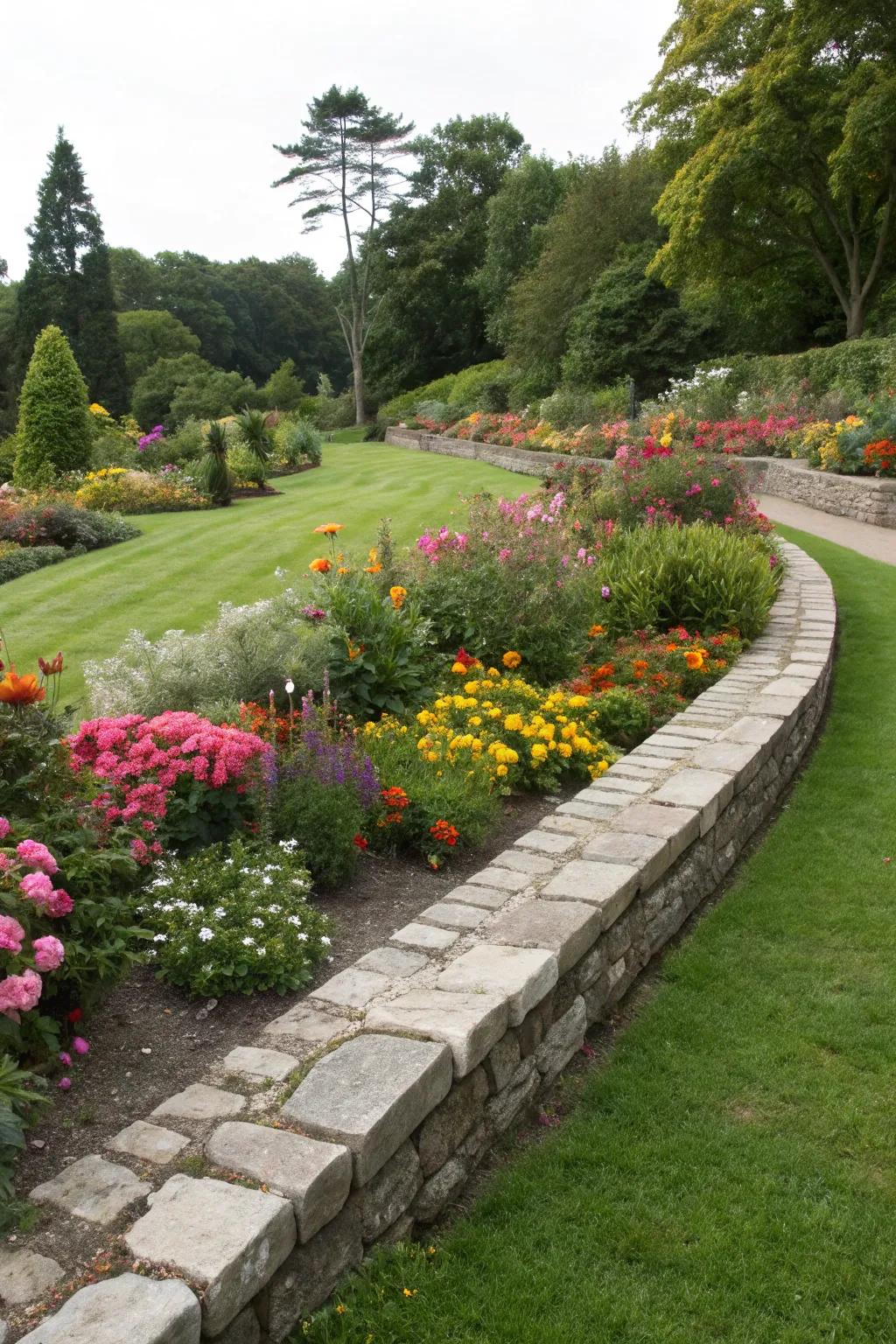
Using stone edging not only adds a rustic charm but also acts as a physical barrier to keep grass from creeping into your garden beds. I’ve found this method both durable and aesthetically pleasing.
You might give these a try:
- Natural Stone Edging Kit: Enhance your garden’s beauty with these durable stones, creating a rustic and practical border.
- Garden Edging Stabilizer: Ensure your stone edging remains secure and stable in any weather condition with this stabilizer.
- Landscape Edging Hammer: Easily install your stone edging with this reliable landscaping hammer for precise placement.
9. Natural Rock Barriers
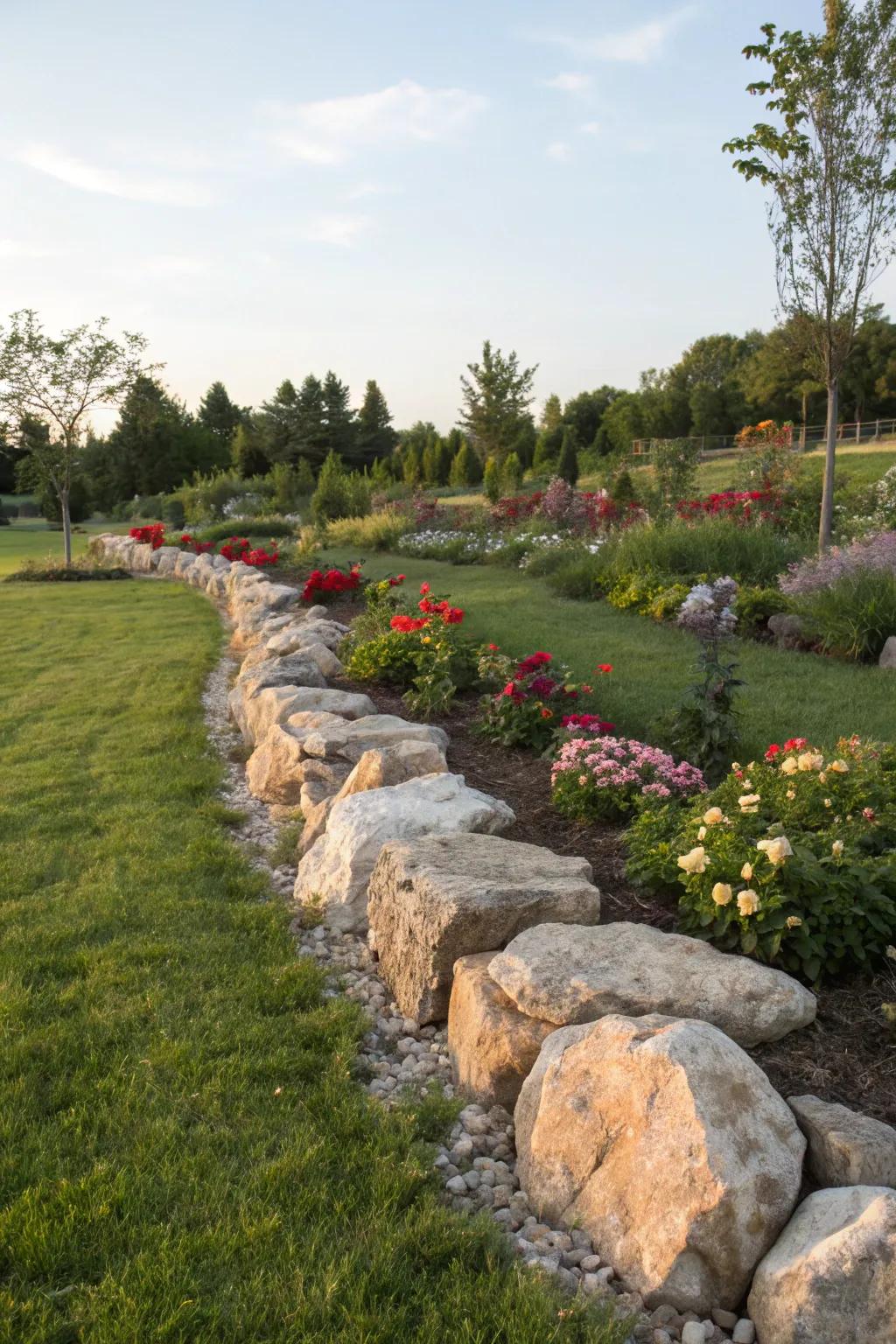
Using natural rocks as barriers is a beautiful way to keep grass away. They blend seamlessly into the landscape and add a touch of nature to your garden design.
Possibly helpful picks:
- Landscaping Stone Set: Design a stunning garden border with these natural stones to enhance your outdoor space’s beauty.
- Decorative Garden Pebbles: Add elegance to your garden edges with these decorative pebbles, perfectly blending with nature.
- Rock Edging for Gardens: Create a durable garden barrier using rock edging to keep grass and weeds at bay.
10. Deep Mulching
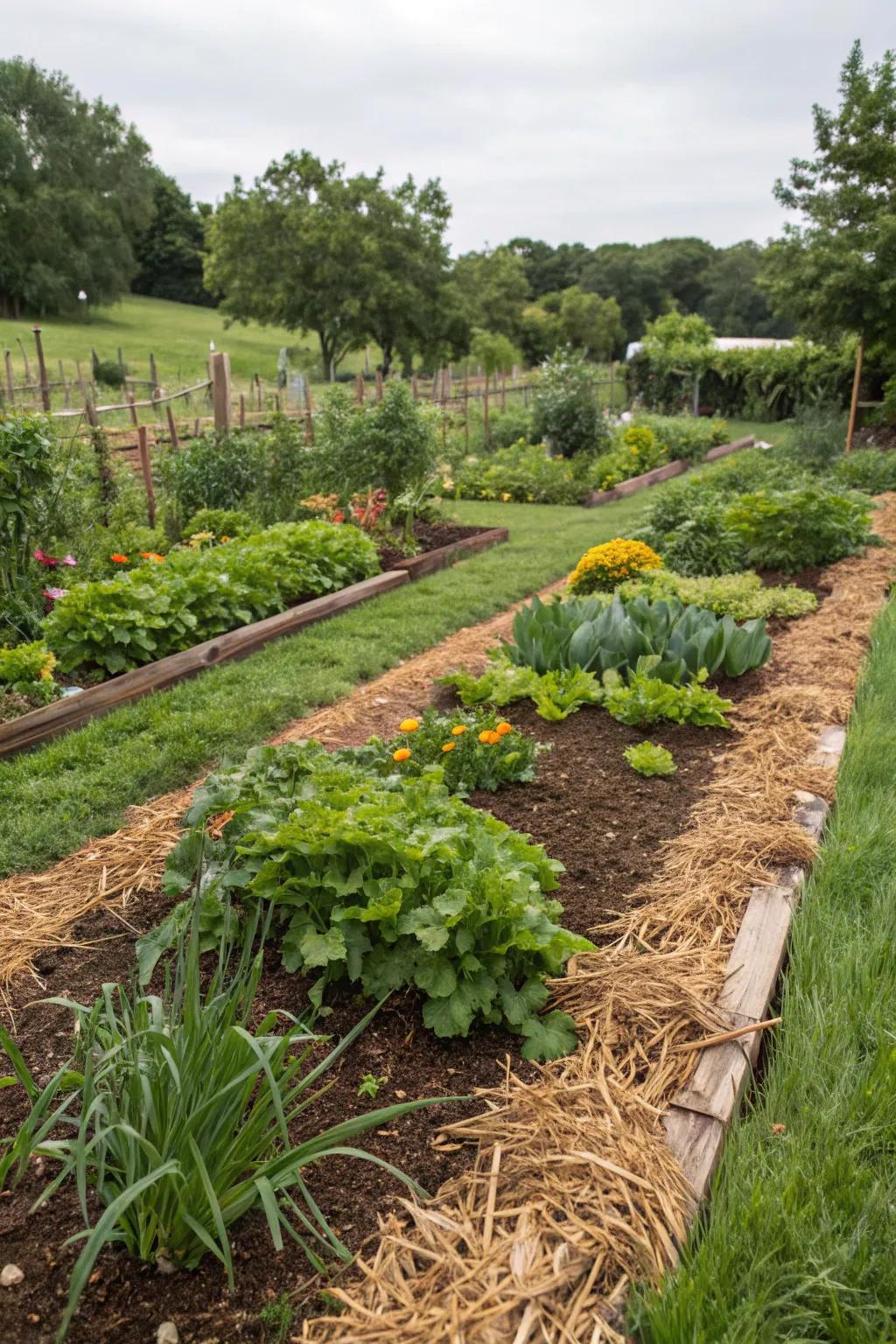
Deep mulching with organic materials like leaves or wood chips can naturally smother grass. I often use this method in my vegetable garden to keep it low-maintenance.
A few choices to try:
- Organic Mulch Wood Chips: Enhance your garden with natural wood chips, perfect for smothering grass effectively.
- Garden Mulching Leaves: Use mulching leaves to naturally suppress grass and enrich your soil.
- Heavy Duty Garden Mulch Fabric: Lay down mulch fabric to create a weed-resistant barrier, aiding in grass control.
11. Trench Edging
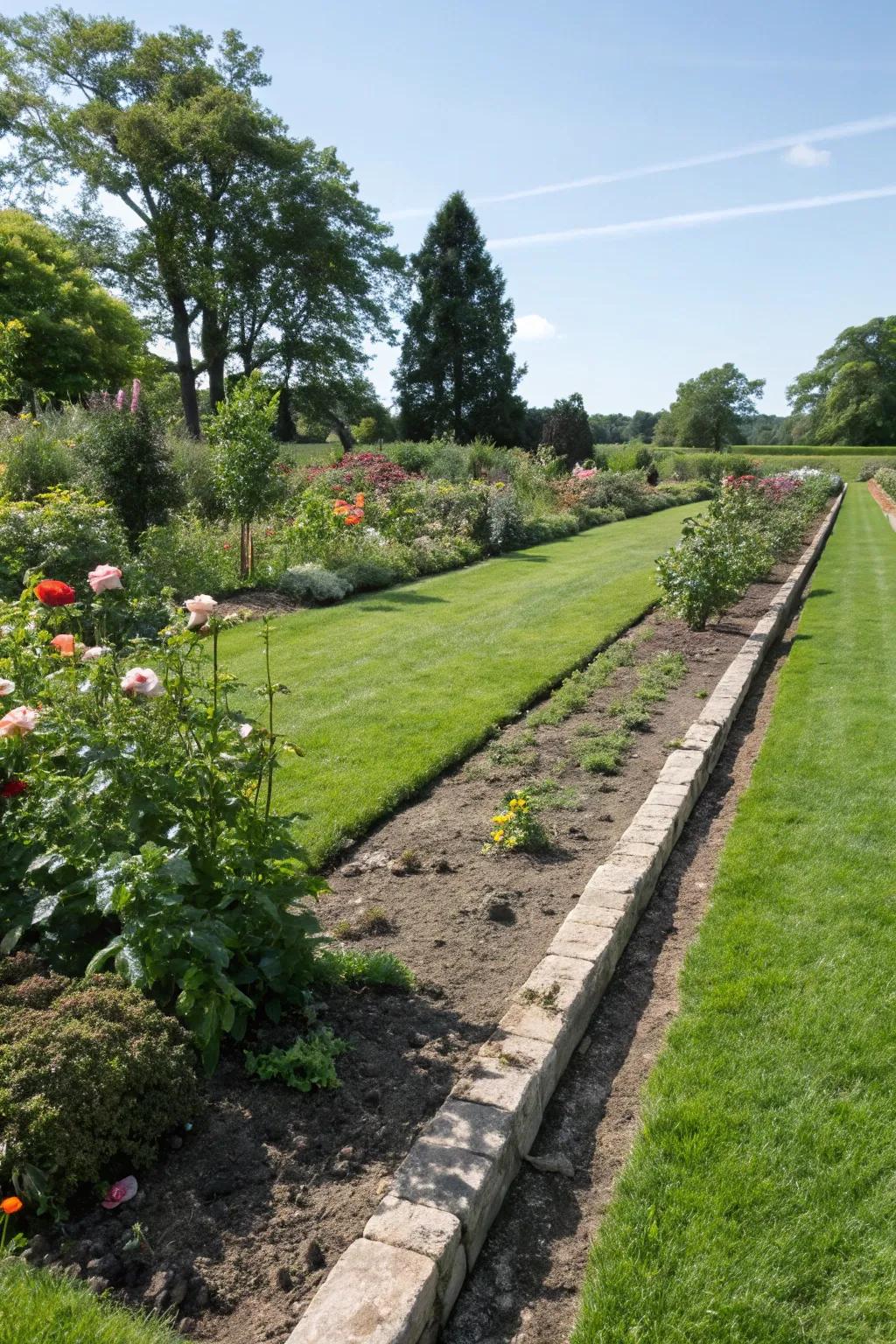
Digging a shallow trench around garden beds can act as a simple grass deterrent. It’s a classic technique that adds a clean, defined edge to any garden.
A few relevant products:
- Garden Edging Tool: Create crisp, clean garden edges effortlessly with this reliable trench-digging tool.
- Roll of Landscape Fabric: Prevent grass invasion by lining your trenches with durable landscape fabric.
- Heavy-Duty Edging Spade: Perfect your garden’s edge with this sturdy, easy-to-use edging spade.
12. Gravel Paths
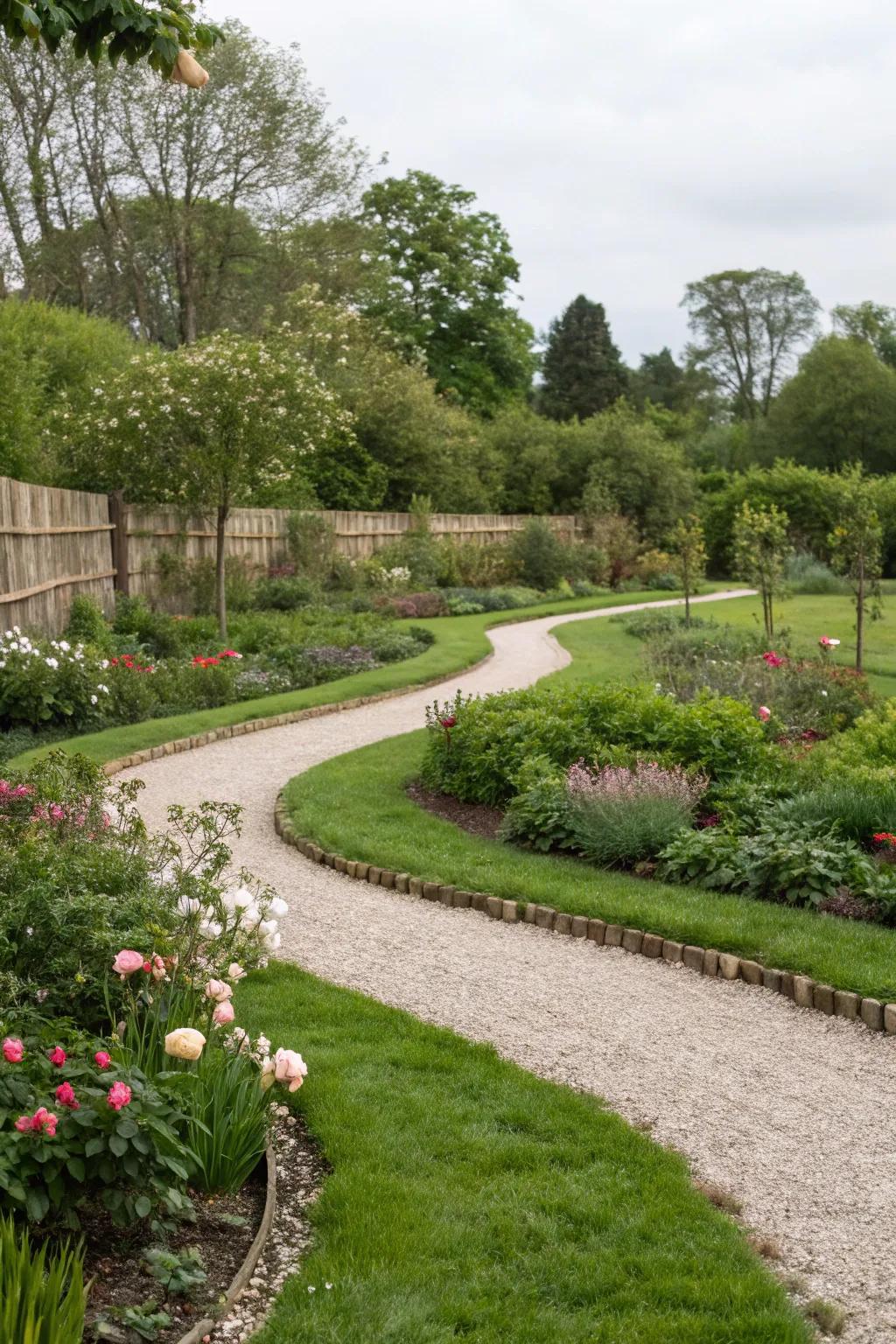
Adding gravel paths not only helps with drainage but also creates a barrier against grass. I love the sound of gravel crunching underfoot, and it keeps my garden looking neat.
Try these:
- Decorative Garden Gravel: Enhance path aesthetics and prevent grass intrusion with quality decorative gravel. Create your walk today.
- Garden Path Edging: Define your garden paths while keeping grass out. Easy installation for a polished look.
- Landscape Fabric: Stop weeds and support drainage by installing durable landscape fabric beneath your gravel paths.
13. Sand Beds
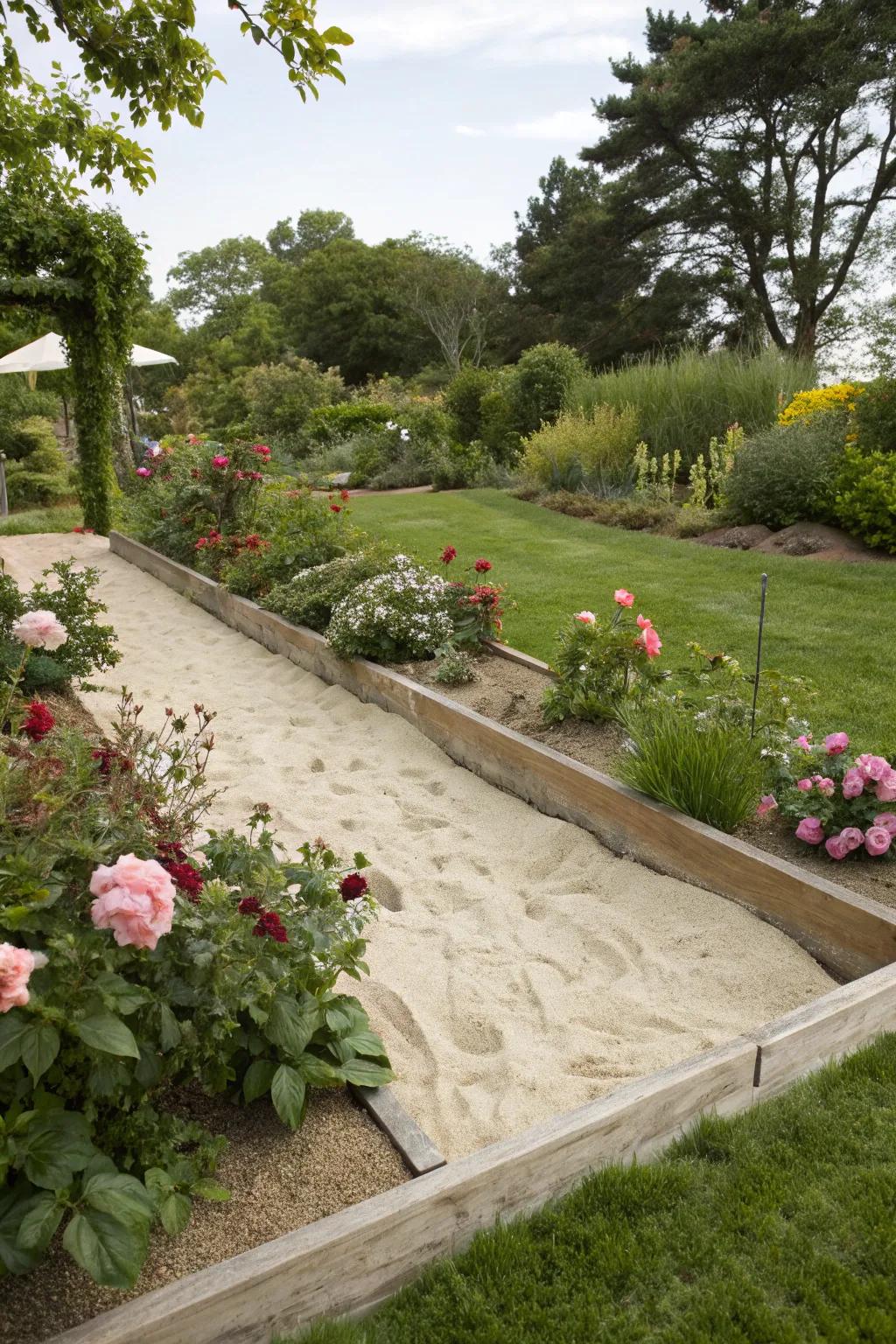
Creating a shallow sand bed around your garden can prevent grass from encroaching while adding a beach-like feel. It’s a surprising yet effective method I’ve enjoyed using.
These products might be useful:
- Garden Border Edging: Enhance your garden’s aesthetic and control grass intrusion with durable garden border edging.
- Decorative Sand: Achieve a beach-like garden vibe by spreading decorative sand in your sand beds.
- Landscape Fabric: Prevent grass from creeping in with sturdy landscape fabric beneath your sand beds.
14. Mulch Layering
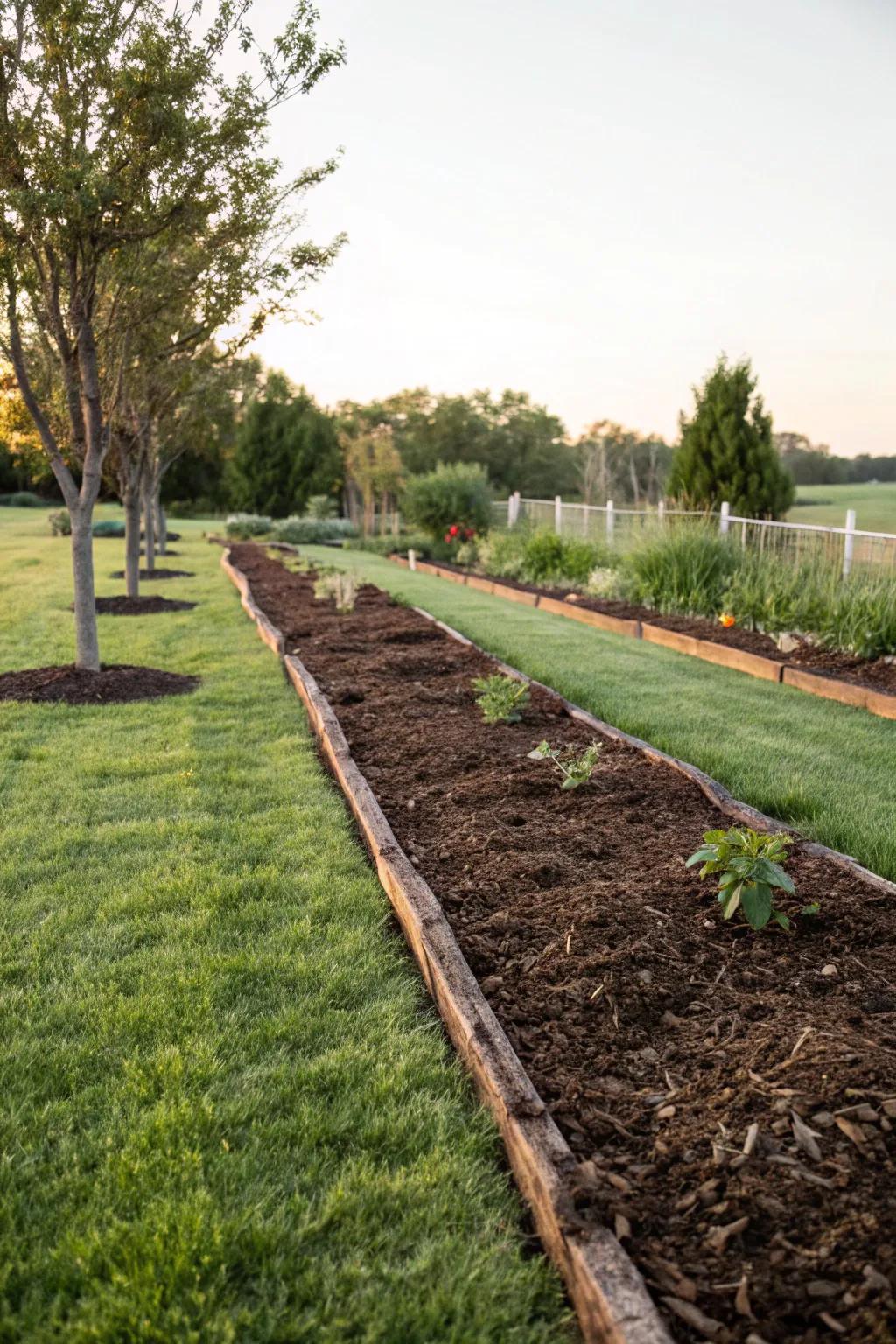
Applying a thick layer of mulch can suppress grass and weeds while retaining soil moisture. I often refresh my mulch in the spring to keep my garden looking tidy and grass-free.
Items that may come in handy:
- Organic Bark Mulch: Enhance your garden’s appeal and suppress weeds by applying organic bark mulch regularly.
- Mulch Rake: Efficiently spread and maintain mulch layers in your garden with this easy-to-use rake.
- Garden Fabric Ground Cover: Use garden fabric under mulch to improve weed control and retain soil moisture effectively.
15. Concrete Curbs
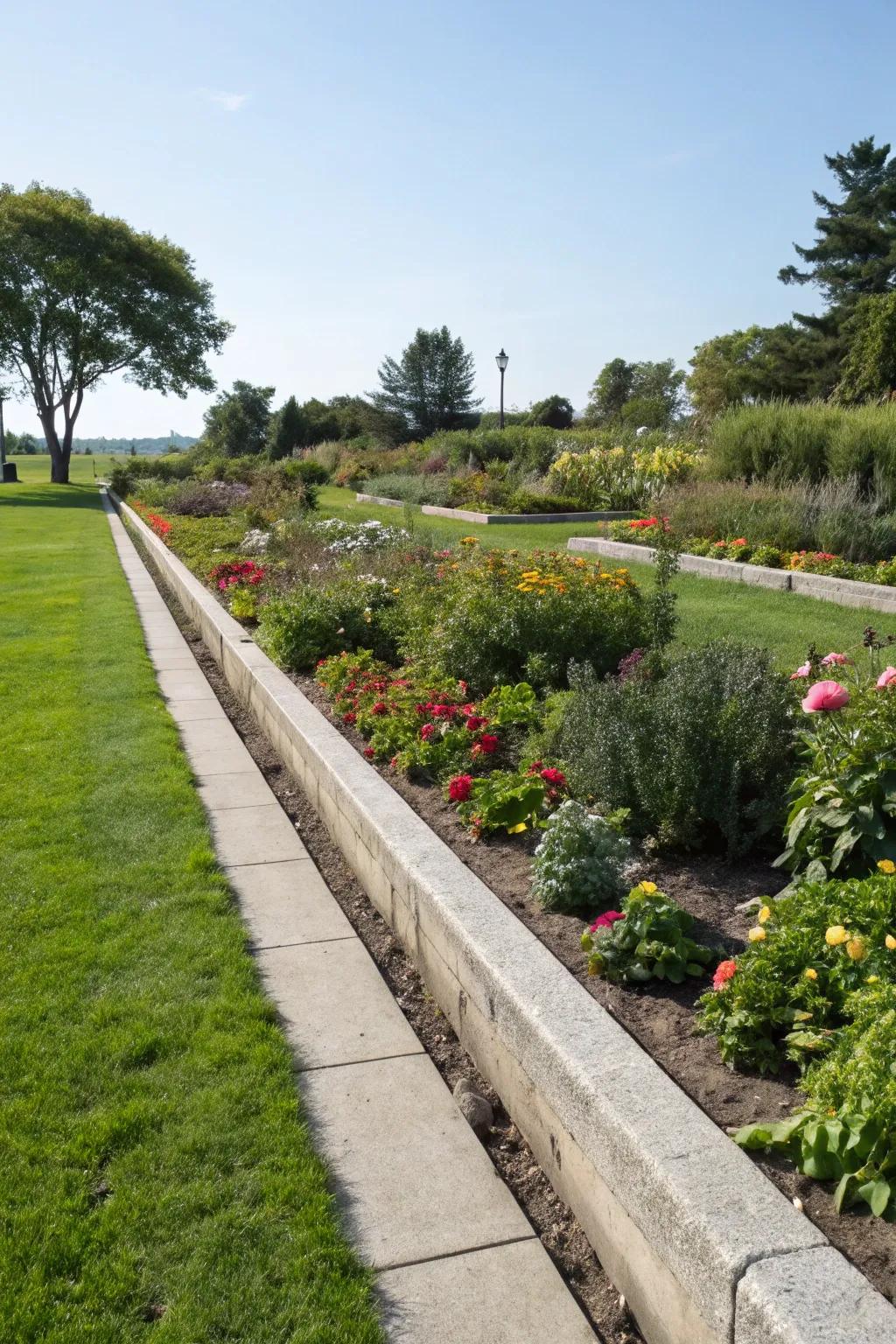
For a more permanent solution, concrete curbs can keep grass in check while offering a clean, modern look. This method has worked wonders in my more formal garden areas.
May just do the trick:
- Concrete Edging Mold: Create sleek curbs easily; perfect for keeping grass out with a professional look.
- Outdoor Concrete Sealant: Protect your concrete curbs from weathering; prolong their lifespan with ease.
- Garden Landscaping Tools Set: Equip yourself with essential tools to design and maintain perfect concrete curbs.
16. Bamboo Borders
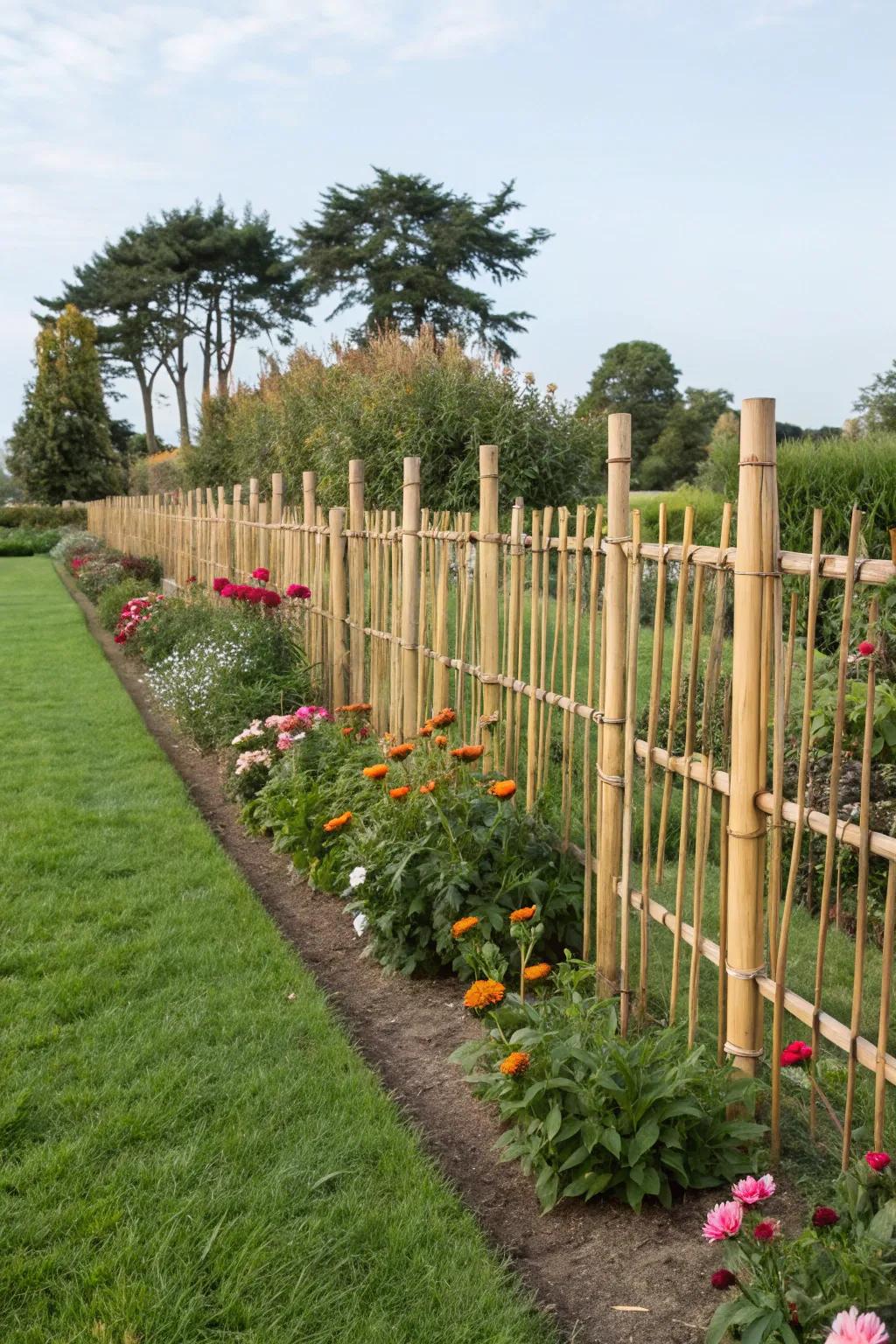
Bamboo stakes driven into the ground offer a quick and exotic way to separate garden areas. I’ve used this in my Asian-themed garden to great effect.
Some handy options:
- Bamboo Garden Edging Roll: Enhance your garden’s elegance with natural bamboo edging. Easy installation for a serene look.
- Bamboo Fence Panels: Create a natural garden barrier with these durable bamboo fence panels. Exotic and practical.
- Bamboo Stakes for Garden: Use bamboo stakes to secure garden structures. Strong, eco-friendly, and versatile for any theme.
17. Herbaceous Borders
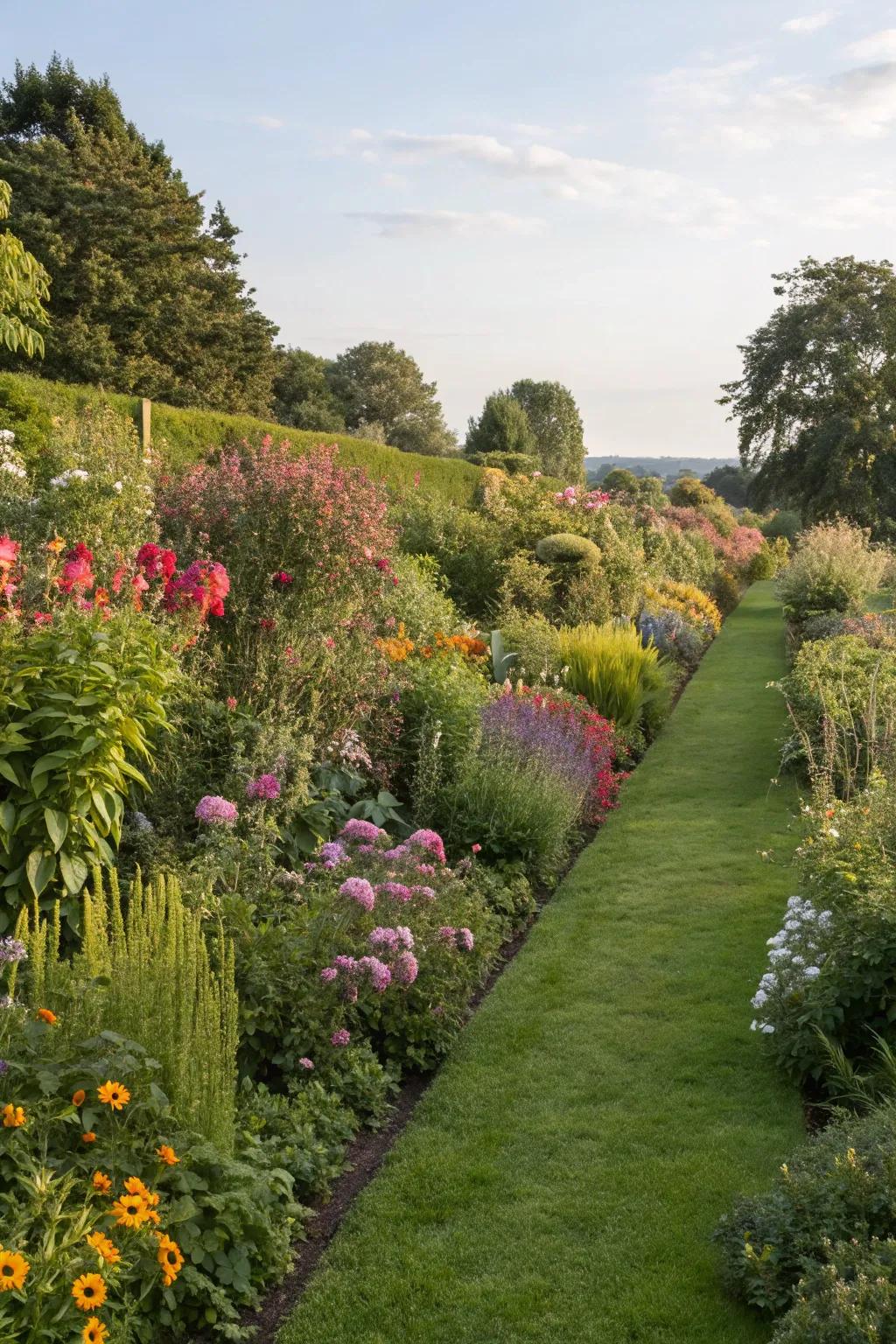
Planting dense rows of low-growing herbs or flowers can form a living barrier against grass. This not only looks stunning but also adds fragrance and color to your garden.
Maybe worth checking out:
- Low-Growing Perennial Flower Seeds: Plant these seeds to create a colorful, fragrant barrier that enhances your garden’s beauty effortlessly.
- Herb Seed Variety Pack: Grow a vibrant herb border with this variety pack, adding color and aromatic charm to your garden.
- Garden Edge Border Fence: Install this decorative fence to neatly separate your garden from grass, enhancing its visual appeal.
18. Landscape Fabric
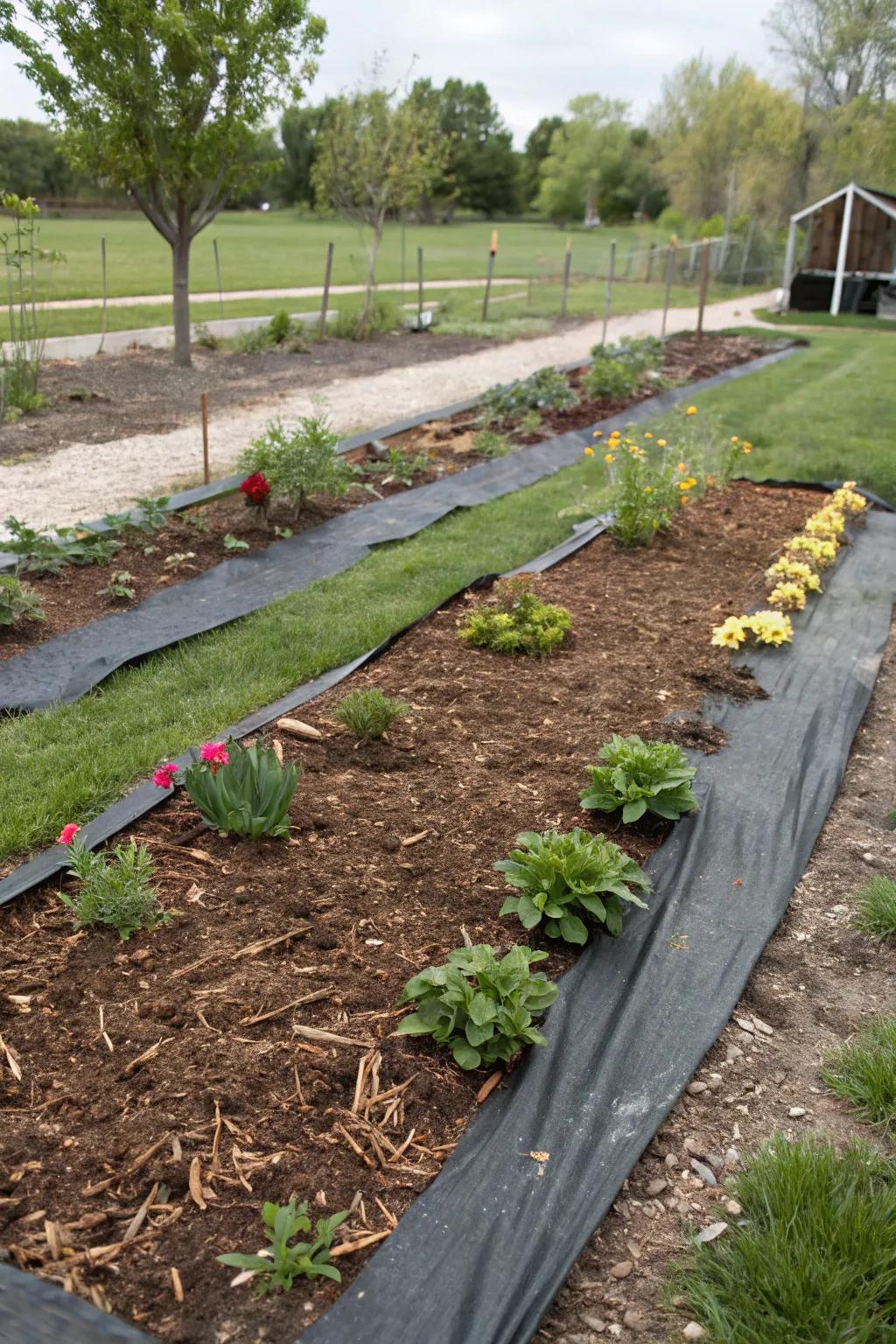
Placing landscape fabric under your soil or mulch can effectively prevent grass from growing through. This has been a lifesaver in my more stubborn areas.
A few helpful options:
- Heavy-Duty Landscape Fabric: Prevent grass growth effortlessly with this durable fabric. Easy to install and long-lasting protection.
- Weed Barrier Landscape Fabric: Safeguard your garden beds from weeds with this reliable, breathable barrier fabric.
- UV-Resistant Ground Cover Fabric: Enhance garden aesthetics and block weeds with this UV-resistant ground cover fabric.
